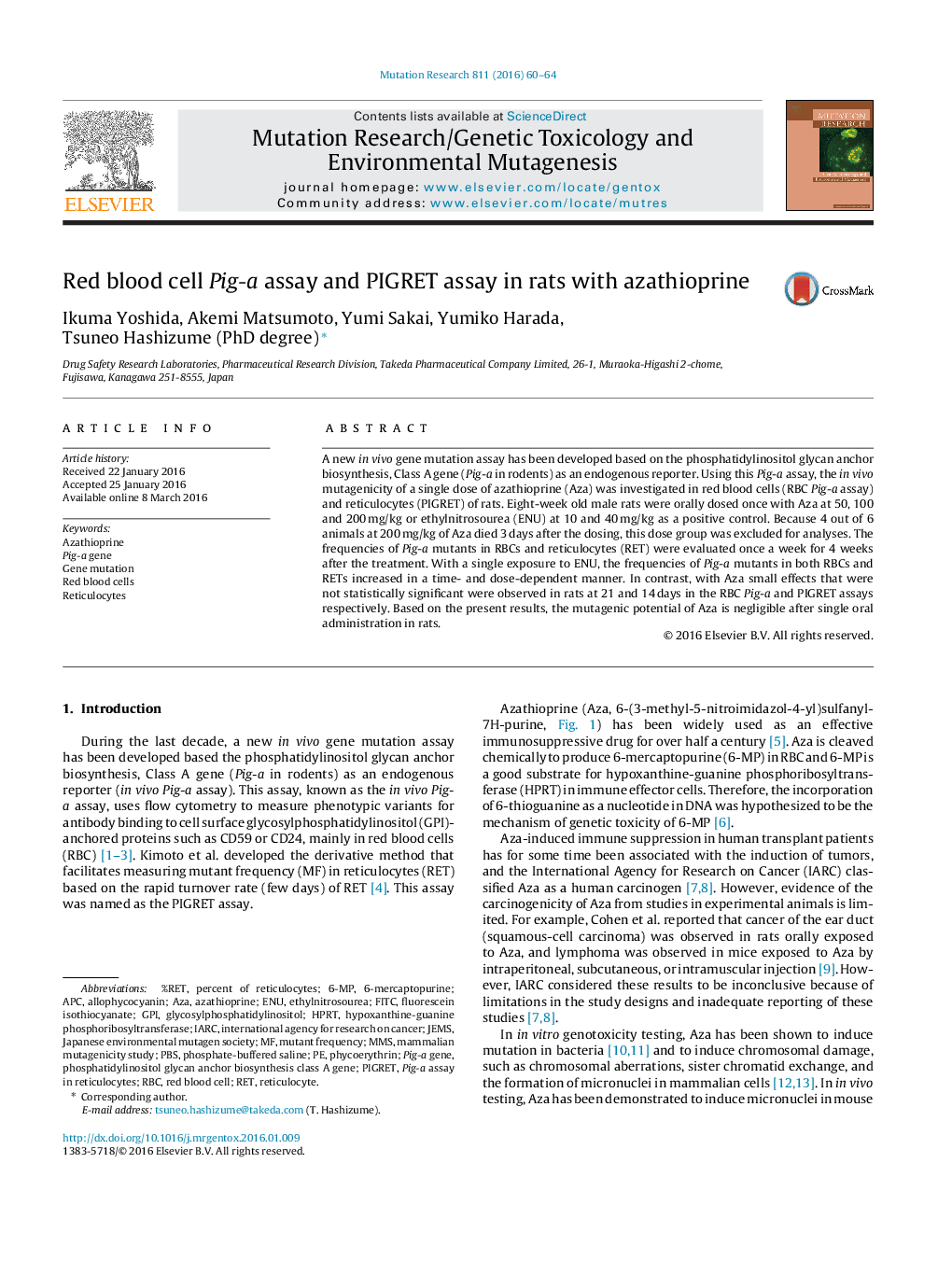| Article ID | Journal | Published Year | Pages | File Type |
|---|---|---|---|---|
| 5528766 | Mutation Research/Genetic Toxicology and Environmental Mutagenesis | 2016 | 5 Pages |
â¢As a part of a collaborative study, Pig-a assay of azathioprine was investigated.â¢Positive control, ENU showed significant result in both RBC Pig-a and PIGRET assays.â¢Azathioprine did not increase Pig-a mutant frequency in both assays.â¢The mutagenicity of azathioprine was negligible in rats with single dose.
A new in vivo gene mutation assay has been developed based on the phosphatidylinositol glycan anchor biosynthesis, Class A gene (Pig-a in rodents) as an endogenous reporter. Using this Pig-a assay, the in vivo mutagenicity of a single dose of azathioprine (Aza) was investigated in red blood cells (RBC Pig-a assay) and reticulocytes (PIGRET) of rats. Eight-week old male rats were orally dosed once with Aza at 50, 100 and 200Â mg/kg or ethylnitrosourea (ENU) at 10 and 40Â mg/kg as a positive control. Because 4 out of 6 animals at 200Â mg/kg of Aza died 3Â days after the dosing, this dose group was excluded for analyses. The frequencies of Pig-a mutants in RBCs and reticulocytes (RET) were evaluated once a week for 4 weeks after the treatment. With a single exposure to ENU, the frequencies of Pig-a mutants in both RBCs and RETs increased in a time- and dose-dependent manner. In contrast, with Aza small effects that were not statistically significant were observed in rats at 21 and 14Â days in the RBC Pig-a and PIGRET assays respectively. Based on the present results, the mutagenic potential of Aza is negligible after single oral administration in rats.
